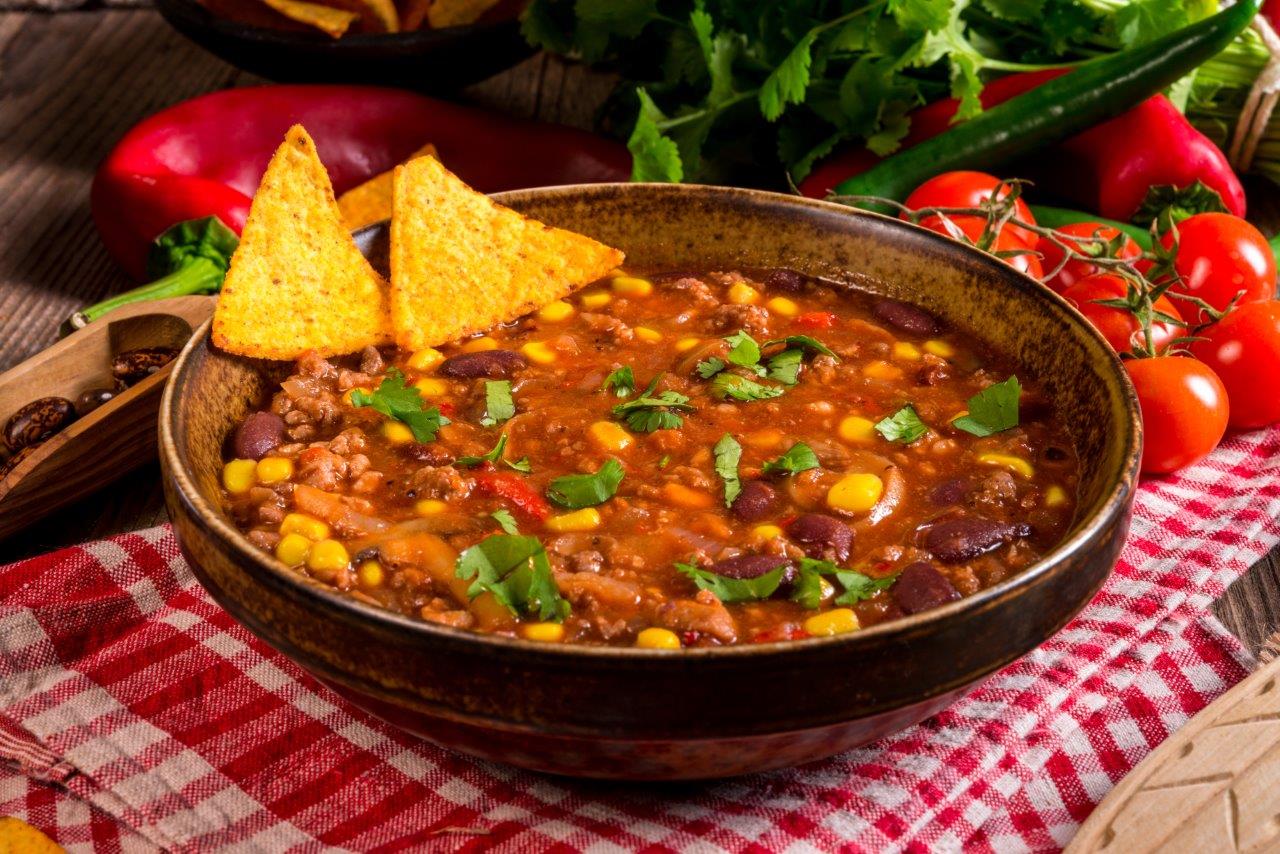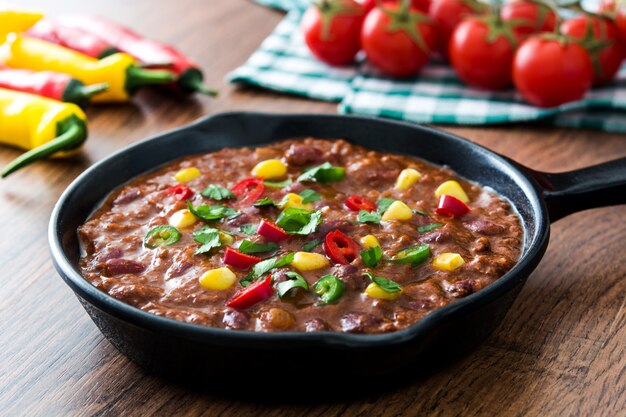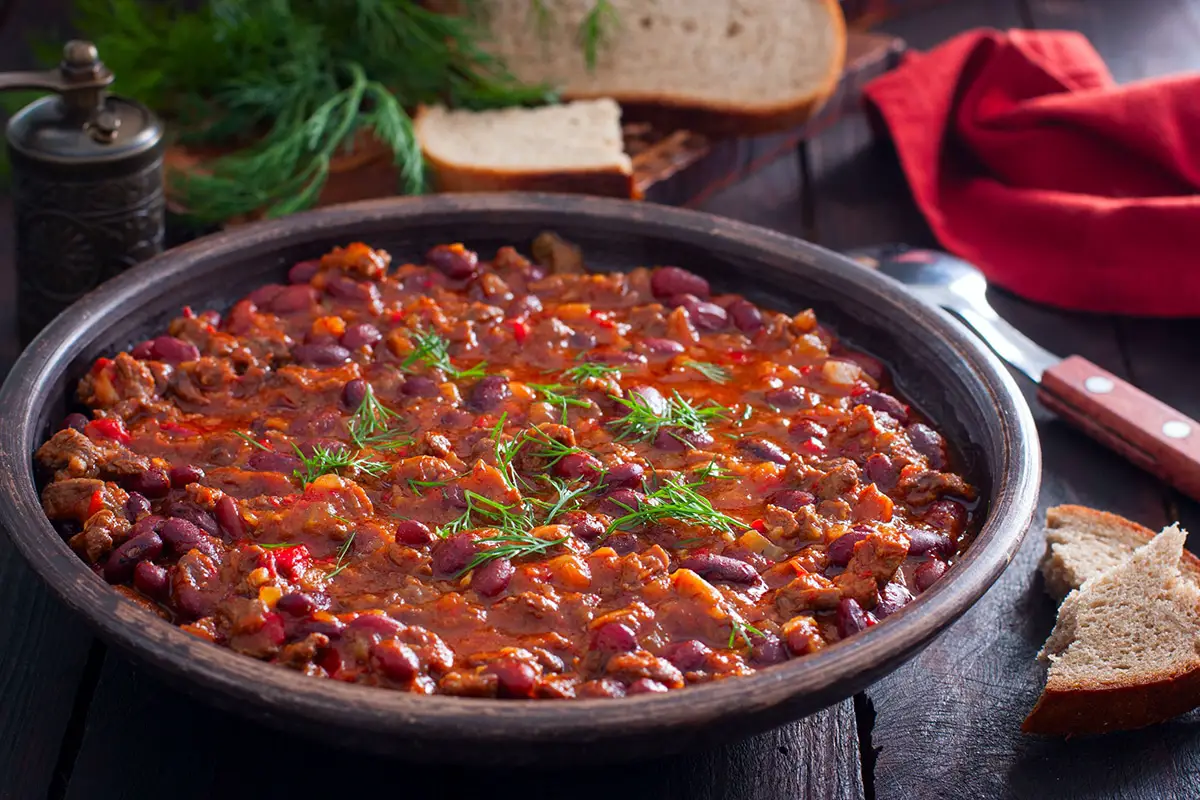Video tentang Chili Con Carne: A Deep Dive into the Hearty Heart of Tex-Mex Cuisine
Chili Con Carne: A Deep Dive into the Hearty Heart of Tex-Mex Cuisine

Chili con carne. The very name conjures images of bubbling pots, fragrant spices, and a comforting warmth that permeates both the dish and the soul. This iconic stew, a cornerstone of Tex-Mex cuisine, is far more than just a simple collection of ingredients; it’s a testament to culinary evolution, cultural fusion, and the enduring power of a perfectly balanced flavor profile. Its history is rich, its variations countless, and its appeal universal. This exploration delves deep into the world of chili con carne, uncovering its origins, dissecting its components, and offering a guide to crafting the perfect bowl.
A History Steeped in Spice and Controversy:
Pinpointing the exact origins of chili con carne is a task fraught with difficulty, much like navigating a particularly spicy batch. While its modern form is inextricably linked to Texas, its roots lie far south, in the culinary traditions of Mexico. Early versions likely consisted of simple chili peppers, meat (often game), and perhaps some basic seasonings. The exact composition varied widely depending on regional availability and individual preferences. Some historians point to indigenous populations of Mexico as the original creators, utilizing chili peppers – a staple of their diet – in various stews and sauces long before European contact.
The arrival of European settlers introduced new ingredients and techniques, gradually shaping the dish into what we recognize today. Cattle ranching in Texas played a pivotal role, providing abundant beef as the primary meat source. The vast plains and arid climate of the region also influenced the development of chili, emphasizing hearty, slow-cooked dishes that could be easily prepared and preserved.
One of the most contentious aspects of chili’s history is the "meat" debate. While beef is the dominant meat in modern chili con carne, its traditional usage has been a subject of much discussion. Some argue that authentic chili must include beef, while others contend that other meats, such as pork or venison, are equally valid, reflecting the historical variations in ingredients. This debate often spills into heated discussions about regional styles and personal preferences, further highlighting the dish’s rich and diverse heritage.
The Essential Ingredients: A Symphony of Flavor:
The beauty of chili con carne lies in its adaptability. While the core components remain consistent, variations abound, resulting in a vast spectrum of flavor profiles. However, certain ingredients consistently form the backbone of this hearty stew:
-
Meat: Beef is the most common choice, typically chuck or brisket, chosen for their high fat content which renders during the cooking process, adding depth and richness to the chili. Ground beef can also be used, offering a quicker cooking time, but often resulting in a less textured chili. As mentioned earlier, other meats like pork, venison, or even lamb can be incorporated, each lending its unique flavor profile.

-
Chili Peppers: The heart and soul of chili con carne, chili peppers provide the heat and complexity. The type of chili pepper used dramatically impacts the final product. Ancho chilis offer a deep, earthy sweetness, while chipotle peppers contribute a smoky, slightly sweet heat. Pasilla chilis bring a dark, rich flavor, while cayenne peppers deliver a fiery kick. The choice of chili pepper, or combination thereof, is crucial in crafting the desired level of heat and flavor complexity.
/images.kitchenstories.io/wagtailOriginalImages/YT0016_Final_small.jpg)
Onions and Garlic: These aromatic vegetables form the foundation of the chili’s flavor base, providing a savory sweetness that complements the other ingredients. Caramelized onions add a layer of depth and richness, while garlic contributes a pungent, savory note.
-
Spices: A blend of spices enhances the chili’s overall flavor profile. Common spices include cumin, oregano, chili powder, and paprika. These spices work in harmony to create a complex and layered flavor, balancing the sweetness of the onions and peppers with a warm, earthy undertone.
-
Tomatoes: Tomatoes add acidity and moisture to the chili, balancing the richness of the meat and the heat of the peppers. Diced tomatoes, tomato paste, or even crushed tomatoes can be used, depending on the desired consistency and flavor profile.
-
Beans: While traditionally omitted in some purist versions ("chili without beans"), beans are a common addition in many modern recipes. Kidney beans, pinto beans, or black beans are popular choices, adding texture, protein, and a subtle earthy flavor.
-
Broth or Stock: Liquid is essential for simmering the chili and developing its rich flavors. Beef broth or stock is a natural choice, adding depth and enhancing the savory notes. Water can be used as a substitute, but the flavor will be less nuanced.

Crafting the Perfect Bowl: A Step-by-Step Guide:
The beauty of chili con carne lies in its simplicity and adaptability. However, following a few key steps can elevate your chili from good to exceptional:
-
Sauté the Aromatics: Begin by sautéing the onions and garlic in a large pot or Dutch oven until softened and slightly caramelized. This step builds the foundation of the chili’s flavor profile.
-
Brown the Meat: Add the meat to the pot and brown it thoroughly, breaking it up as it cooks. This step renders the fat, adding richness and depth to the chili.
-
Bloom the Spices: Add the chili powder, cumin, oregano, and paprika to the pot and cook for a minute or two, allowing the spices to bloom and release their aromas. This step is crucial for developing the complex flavor profile of the chili.
-
Simmer the Chili: Add the tomatoes, chili peppers, beans (if using), and broth or stock to the pot. Bring the mixture to a simmer, then reduce the heat to low, cover, and cook for at least 2-3 hours, or even longer for a deeper, more intense flavor. The longer it simmers, the more the flavors meld and deepen.
-
Adjust Seasoning: Before serving, taste the chili and adjust the seasoning as needed. You may want to add more salt, pepper, or a touch of sugar to balance the flavors.
-
Garnish and Serve: Serve the chili hot, garnished with your favorite toppings. Common toppings include shredded cheese, sour cream, chopped onions, cilantro, and avocado.
Variations and Regional Styles:
The beauty of chili con carne is its versatility. Countless variations exist, reflecting regional preferences and individual tastes. Some common variations include:
-
Texas Red Chili: Typically made with beef and a blend of chili peppers, often featuring a bright red color.
-
New Mexico Chili: Often features a blend of red and green chilis, resulting in a unique flavor profile that balances heat and sweetness.
-
Green Chili: Made with green chilis, offering a brighter, fresher flavor compared to red chili.
-
Vegetarian Chili: Meat is replaced with vegetables like mushrooms, beans, or lentils, offering a hearty and flavorful vegetarian alternative.
Conclusion: A Culinary Legacy Continues:
Chili con carne is more than just a dish; it’s a culinary legacy, a testament to the power of cultural fusion and the enduring appeal of simple, hearty food. Its rich history, diverse variations, and adaptable nature ensure its continued popularity for generations to come. Whether you prefer a fiery, traditional version or a more modern, customized creation, the experience of savoring a bowl of perfectly cooked chili con carne is a testament to the enduring magic of this iconic stew. So gather your ingredients, embrace the process, and embark on your own chili con carne adventure. The flavorful journey awaits.

Penutup
Therefore, we hope this article has provided valuable insights on Chili Con Carne: A Deep Dive into the Hearty Heart of Tex-Mex Cuisine. We thank you for the time you spent reading this article . See you in our next article!

